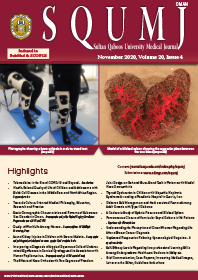Main Article Content
Abstract
Objectives: Self-efficacy is an important factor in determining the ability of students to execute tasks or skills needed in the implementation of interprofessional learning (IPL). This study aimed to identify levels of self-efficacy with regards to IPL skills among undergraduate healthcare students and to investigate differences according to gender, programme of study and year of study. Methods: This descriptive cross-sectional study was conducted between January and March 2018 at the International Islamic University Malaysia, Kuantan, Malaysia. The Self-Efficacy for Interprofessional Experiential Learning scale was used to evaluate the self-efficacy of 336 students from five faculties including nursing, medicine, dentistry, pharmacy and allied health sciences. Results: Significant differences in self-efficacy scores for the interprofessional interaction subscale were identified according to programme of study, with pharmacy students scoring significantly lower than allied health students (mean score: 54.1 ± 10.4 versus 57.4 ± 10.1; P = 0.014). In addition, there was a significant difference in self-efficacy scores for the interprofessional interaction subscale according to year of study, with first-year students scoring significantly lower compared to fifth-year students (mean score: 52.8 ± 10.4 versus 59.9 ± 11.9; P = 0.018). No statistically significant differences in self-efficacy scores were identified with regards to gender or for the interprofessional team evaluation and feedback subscale. Conclusion: These findings may contribute to the effective implementation of IPL education in healthcare faculties. Acknowledging the influence of self-efficacy on the execution of IPL skills is crucial to ensure healthcare students are able to adequately prepare for future interprofessional collaboration in real clinical settings.
Keywords: Self Efficacy; Intersectoral Collaboration; Interdisciplinary Research; Professional Competence; Learning; Undergraduate Medical Education; Malaysia.
Article Details

This work is licensed under a Creative Commons Attribution-NoDerivatives 4.0 International License.
